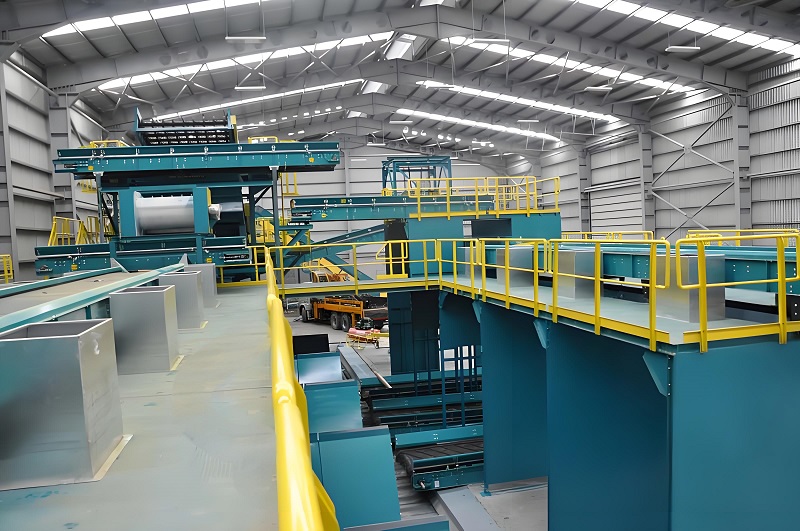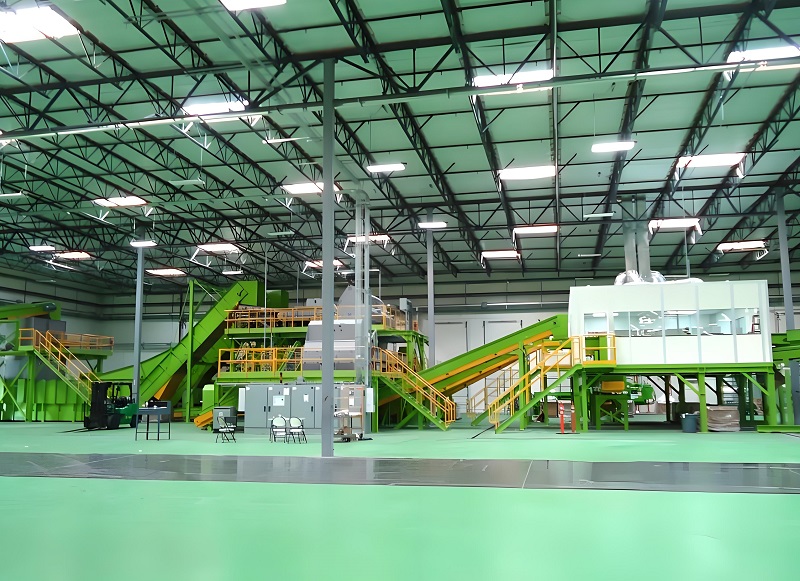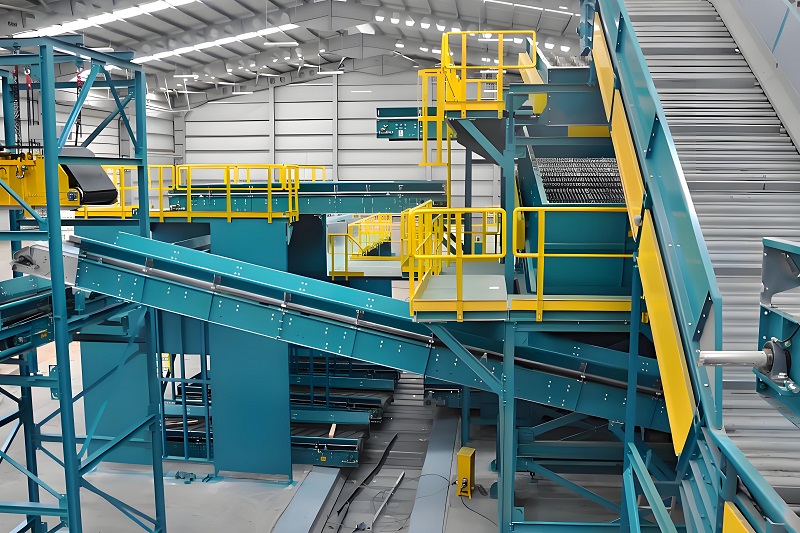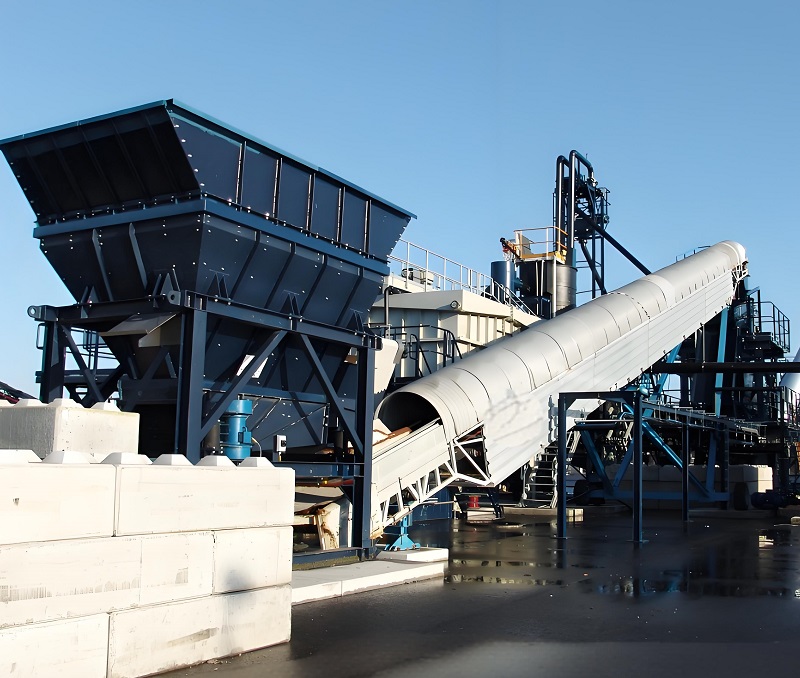In the waste reduction, harmlessness, and resource recovery system, screening is the core link connecting front-end collection and back-end disposal, directly determining the waste resource recovery rate and subsequent processing efficiency. Currently, municipal solid waste has a complex composition and uneven particle size, making traditional extensive sorting methods insufficient to meet environmental protection requirements. Standardized screening processes have become an industry necessity. This article focuses on the entire waste screening chain, from pretreatment, core grading, material disposal to system support, detailing the operational specifications, equipment parameters, and process logic of each stage. It systematically presents the complete process from waste reception to resource recycling, providing practical references for waste treatment plant process optimization, equipment selection, and efficient operation, helping to improve the environmental benefits and resource value of waste treatment.

Pre-treatment Stage Before Waste Screening (Basic Preparation Stage)
The efficiency of waste screening relies on standardized pre-treatment. The core objective of this stage is to remove large interfering materials and adjust the material state to create stable conditions for subsequent screening. This mainly includes three key steps:
1. Waste Receiving and Temporary Homogenization
After arriving at the treatment plant, waste is dumped into a closed waste storage pit via an unloading platform. The storage pit must be equipped with a deodorization system and leachate collection device to avoid secondary pollution. During temporary storage, bulldozers or grab buckets are used for mixing and homogenization, typically for 24-48 hours. The purpose is to fully mix waste of different compositions and moisture levels, reducing fluctuations in subsequent screening. Simultaneously, the temporary storage stage allows some leachate to drain naturally, reducing the moisture content of the waste and preventing material clumping and equipment blockage during screening.
2. Manual/Mechanical Sorting of Large Materials
The homogenized waste first enters the pre-treatment sorting line. The first step is to remove large debris that cannot pass through the screening equipment. For large waste items exceeding 30cm in size (such as furniture, mattresses, and large packaging), manual sorting or hydraulic shearing is used. Manual sorting must be conducted in a closed sorting room equipped with protective gear and dust removal facilities. For hard, large impurities such as metal and glass, a magnetic separator is used to initially separate the metal, followed by manual removal of non-degradable hard materials such as glass and ceramics. This step prevents large pieces of material from damaging the screening equipment and ensures smooth subsequent processes.
3. Crushing and Moisture Content Adjustment After preliminary sorting, the waste enters the crusher, where larger particles are crushed to below 10-20cm to ensure smooth entry into the screening equipment. Shear crushers are typically used, featuring low noise and anti-tangling characteristics, making them suitable for processing complex municipal solid waste. If the moisture content of the waste is too high (over 60%), it needs to be adjusted to 40%-50% by sun-drying or adding dry materials (such as fly ash or sawdust). If the moisture content is too low (below 30%), appropriate spraying can be used to increase humidification, preventing the generation of a large amount of dust during screening and balancing screening efficiency with environmental protection requirements.

Core Screening Stage (Grading and Separation Stage)
The pre-treated waste enters the core screening process. This stage, through multi-stage and multi-equipment cooperation, achieves precise separation of materials with different compositions and particle sizes. It is a key step in waste resource utilization and mainly includes four progressive procedures:
1. Primary Rotary Cylinder Screening (Coarse Grading) A rotary drum screen with an aperture of 50-80mm is used as the primary screening equipment. Waste is evenly fed into the drum through the feed hopper. The drum speed is controlled at 15-20 r/min, and the rotation and tumbling achieve full contact between the material and the screen. Materials with particle sizes larger than the screen openings (such as large bricks and stones, and incompletely broken hard objects) are screened out and transported to landfills or used for roadbed filling as inert waste; materials with particle sizes smaller than the screen openings enter secondary screening for preliminary coarse-fine separation. The primary drum screen needs to be equipped with an automatic screen cleaning device, using brushes or shot to clean the screen openings and prevent clogging.
2. Secondary Vibrating Screening (Fine Grading) The fine material from the primary screening enters the vibrating screen, which has two layers of screen openings: an upper layer with 20-30mm openings and a lower layer with 10mm openings, achieving "three-stage grading": the 20-30mm particle size material from the upper layer (mainly plastics, paper, and large pieces of kitchen waste) enters the subsequent resource recycling line; the 10-20mm particle size material from the middle layer (mixed kitchen waste and small plastic particles) enters tertiary screening; the fine material smaller than 10mm from the lower layer (mainly mud, sand, and powdery organic matter) is directly transported to a composting or incineration pretreatment system. The vibrating screen's vibration frequency is adjusted to 10-15Hz to improve screening accuracy through high-frequency vibration. It is also equipped with a dust collection hood to reduce dust pollution.
3. Three-stage air separation and magnetic separation (component separation): The mixture after two-stage screening enters the air separation equipment, utilizing the density differences of different materials to separate light and heavy components. The air velocity of the air separator is controlled at 8-12m/s. Light materials (such as plastic film, paper, and foam) are carried away by the airflow, collected by a cyclone separator, and sent to the plastic recycling sorting line for further separation of different plastic materials; heavy materials (such as small bricks, metal fragments, and kitchen waste) fall onto the conveyor belt below. Simultaneously, a high-intensity magnetic separator is installed after air separation to further separate metal impurities from the heavy materials, improving resource recovery rate.
4. Fine screening (separation of kitchen waste and recyclables): For the heavy mixture after air separation, a drum screen with an aperture of 5-8mm is used for fine screening, focusing on separating kitchen waste and small particulate inert substances. During this stage, the rotary drum screen speed is adjusted to 25-30 r/min, and a spraying device is used to moisten the surface of the material, making it easier for kitchen waste to pass through the screen holes. The undersize material (mainly kitchen waste) is transported to the anaerobic fermentation or composting system; the oversize material (small brick particles, unseparated plastics) re-enters the manual sorting table, where remaining recyclables are manually selected. Inert materials are used as covering material for landfill leachate treatment.

Grading and Processing Procedures for Screened Materials (Resource Utilization Stage)
After screening, different types of materials need to undergo targeted procedures to achieve resource recovery or harmless disposal, ensuring "classified treatment and full utilization of resources." This mainly includes three core procedures:
1. Purification and Reuse of Recyclables Recyclables (plastics, paper, metal, glass) collected from each screening stage enter the resource recycling workshop for further purification. Plastics are separated into different materials (PE, PP, PVC, etc.) through density sorting (water separation method), and after removing impurities, they are crushed, washed, and granulated to produce recycled plastic granules. Paper is removed, pulped, and bleached before being used to produce recycled paper or pulpboard. Metals are classified according to ferromagnetic and non-ferromagnetic properties, crushed, compressed, and sent to smelters for recycling. Glass is washed, crushed, and used as building aggregate or raw material for glass recycling. This process requires strict quality inspection standards to ensure that recycled raw materials meet industry requirements.
2. Organic Waste Resource Utilization Kitchen waste (accounting for 40%-60% of total household waste) separated by screening enters the organic waste treatment system. First, excess moisture is removed using a screw press (moisture content reduced to approximately 60%). Then, the processing method is selected based on composition: higher purity kitchen waste undergoes anaerobic fermentation to produce biogas for power generation or heating, with the fermentation residue being made into organic fertilizer; kitchen waste with more impurities is mixed with other organic waste and subjected to aerobic composting, with the compost temperature controlled at 55-65℃ for 15-20 days. After composting, it becomes organic nutrient soil for landscaping or farmland improvement. During the process, pH, temperature, and oxygen content must be monitored in real time to ensure sufficient fermentation.
3. Disposal of Inert Waste and Non-Recyclable Materials The remaining inert waste after screening (such as bricks, ceramics, and silt) is compressed and packaged and sent to a landfill for sanitary landfilling, or used for road base courses and landfill cover layers, achieving "harmless and reduced-volume" disposal. Non-recyclable lightweight waste (such as heavily polluted plastics and worn-out textiles) and dust generated during the screening process are transported to an incineration power generation system. The heat generated from incineration is used for power generation or heating. After harmless treatment, some of the incineration ash can be used as an additive in building materials, achieving energy recovery and residue utilization.
Supporting Procedures for the Screening System (Stable Operation Phase)
Waste screening is a continuous production process requiring comprehensive supporting procedures to ensure stable and environmentally friendly system operation. This mainly includes three key aspects:

1. Equipment Operation Monitoring and Adjustment The entire screening system is equipped with an intelligent control system that monitors the operating parameters of each piece of equipment in real time (such as drum screen speed, vibrating screen frequency, and air separator wind speed), material flow rate, and screening efficiency. Data is collected by sensors, and the central control system automatically adjusts equipment parameters. When abnormalities such as screen blockage or material accumulation occur, the system issues an alarm signal and initiates emergency procedures (such as increasing screen cleaning intensity and suspending feeding). Simultaneously, dedicated personnel inspect the equipment every 2 hours, focusing on screen wear, bearing temperature, and sealing conditions, and promptly address any malfunctions.
2. Environmental Management and Emission Compliance Dust generated during the screening process is collected in a sealed hood and treated by a bag filter, with the dust emission concentration controlled below 10 mg/m³. Leachate is discharged into the wastewater treatment system and, after anaerobic + aerobic treatment, meets the Class A standard of the "Discharge Standard of Pollutants for Municipal Wastewater Treatment Plants" before being discharged or reused. Noise generated during equipment operation is treated using soundproof enclosures, vibration damping pads, etc., with the noise level at the plant boundary controlled below 60 dB. Furthermore, the treated exhaust gas, wastewater, and waste residue are regularly tested to ensure compliance with environmental protection requirements and prevent secondary pollution.
3. System Cleaning and Maintenance After each day's screening operation, the equipment undergoes a thorough cleaning, using a high-pressure water gun to wash the screens, conveyor belts, and hoppers to remove residual materials and prevent spoilage. The drum screens and vibrating screens are inspected weekly; any damaged screens are replaced promptly, and lubricating oil is applied to bearings, gears, and other moving parts. A comprehensive system maintenance is performed monthly, checking the operational status of equipment connections, electrical systems, and environmental protection facilities to ensure long-term stable operation and extend the equipment's lifespan.
The waste screening process follows a standardized procedure: "Pre-treatment - Core Grading - Resource Recovery - System Support." Pre-treatment processes such as receiving, homogenization, crushing, and sorting lay a solid foundation. Precise grading is achieved through multi-stage screening (drum screen + vibrating screen) combined with air separation and magnetic separation. Differential treatment is then implemented for recyclables, organic waste, and inert waste, with a supporting intelligent monitoring and environmental governance system ensuring stable operation. This entire process not only solves the pain points of complex waste composition and low screening efficiency but also maximizes resource recovery rates and reduces the risk of secondary pollution. Its standardized and refined characteristics align with modern environmental protection requirements, providing a feasible path for the standardized development of the waste treatment industry and helping to promote the high-quality development of waste resource utilization.
Save Time! Get A Detailed Quotation Quickly.
